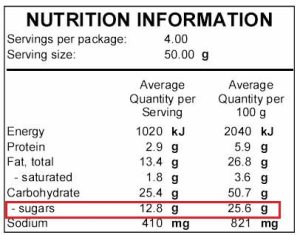With Easter on our doorstep, maintaining a balanced and nutritious diet often hops out the window along with the Easter bunny!
The Australian Dental Association (ADA) urges all Australians to watch “That Sugar Film”, which aims to raise awareness of the effects of a high sugar diet on a healthy body.
“That Sugar Film” sees Damon Gameau embark on a 60 day experiment to consume the equivalent of 40 teaspoons of sugar each day – the average amount of sugar consumed by Australians daily. However, he must consume foods that have ‘hidden sugars’ – that is sugars found in commonly perceived healthy foods and drinks. He does NOT consume junk food, soft drinks, confectionary, or ice-cream. The sugar content of some foods – foods that the average Australian would think are healthy choices – is quite shocking.
During this experiment Damon continues to exercise and eat the same amount of calories each day as he previously did, however the impacts on his body and health are massively different.
The trailer can be viewed below or via this link.
The key to eating well is to enjoy a variety of nutritious foods from each of the Five Food Groups:
- Vegetables and legumes/beans
- Fruit
- Grains (cereal) foods
- Lean meat
- Milk, cheese, yoghurt and/or alternatives
Some foods and drinks do not fit into the Five Food Groups because they are not necessary for a healthy diet and are too high in saturated fat and/or added sugars, added salt or alcohol and low in fibre. These foods and drinks can also be too high in kilojoules (energy). Many tend to have low levels of essential nutrients so are often referred to as ‘energy-dense’ but ‘nutrient-poor’ foods. The problem is that they can take the place of other more nutritious foods.
It is easy to have too much and too many of these foods and drinks, and many people do. Have you ever wondered how much extra sugar you might be consuming in those yummy Eater treats? As well as causing tooth decay, sugars in our diet also contribute to a range of general health concerns such as obesity, high cholesterol and diabetes.
Understanding nutrition information panels and how to interpret the information they are providing us with is an interesting and valuable tool to have in maintaining a healthy diet.
Sugar content is usually listed on nutrition information panels in “grams” per 100g/100ml or per serve of the specific food or drink. As a general rule, the following guidelines can assist you in making choices that are low in sugar:
| Low Sugar | Moderate Sugar | Too much sugar | |
| Food (per 100gm) | 5g or less | 5.1g to 14.9g | 15g plus |
| Drink (per 100ml) | 2.5g or less | 2.6 to 7.4g | 7.5g plus |
Converting the sugar content to a more meaningful measurement such as teaspoons per serve can also make choosing foods and drinks that are low in sugar easier or provide an excellent educational tool for helping children to understand and make healthier dietary choices. Follow the steps below to help in reading nutrition information panels and working out how many teaspoons of sugar are contained in foods or drinks:
1. Locate the Nutrition Information panel on the label of the product you are about to consume (Often located on the back and referred to as a food label)
2. Determine your serving size. If you are consuming more than the “per serve” amount of the product then you will need to calculate your serving size using the “per 100mL” or “per 100g” section
3. Move down the label to locate the ‘sugars’ section (highlighted in red)
4. Divide the “grams” of sugar by 4 to calculate how many teaspoons of sugar for your serving size (i.e: 12.8g divided by 4 = 3.2 teaspoons)
